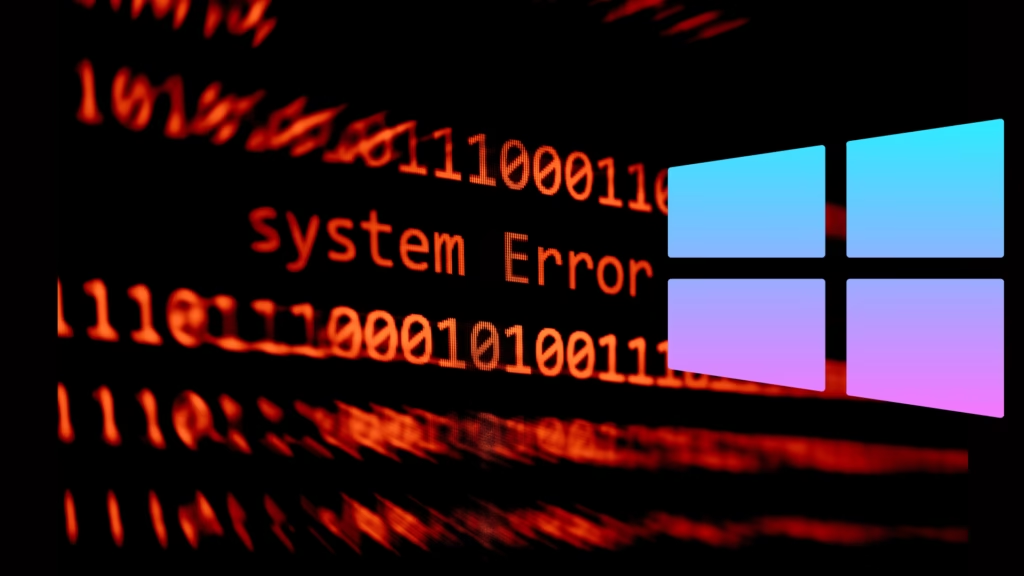Windows is a popular operating system, but sometimes it faces errors and glitches that may interrupt your work. System error codes appear in such situations and learning to rectify them can save you a lot of time.
However, all you get often is the system error code but nothing about what that code actually means. It is easy to correct them once you know the meaning behind them.
Contents
How to Find Windows Error Codes
You can launch a Command Prompt window to look up error codes for Windows.
Step 1
Open the Command Prompt tool on your device. Type CertUtil in the command window and press Enter.
Step 2
Now, replace ErrorCode in the command with the code for which you want an explanation. The format for this would be CertUtil/error ErrorCode.
Step 3
Press Enter and the result will display the Error Message Text. Next to it will be a brief description of the specific error code you entered.
Windows Error Codes List
Here’s a list of a few Windows error codes with their meaning.
Error Code 1(ERROR_INVALID_FUNCTION)
This means that the function you have entered is invalid.
Error Code 2(ERROR_FILE_NOT_FOUND)
This means that the system cannot find the specified file.
Error Code 3(ERROR_PATH_NOT_FOUND)
This error means that the system cannot find the path specified.
Error Code 4(ERROR_TOO_MANY_OPEN_FILES)
The system cannot open the file in this error.
Error Code 5(ERROR_ACCESS_DENIED)
Access is denied in this error.
Error Code 6(ERROR_INVALID_HANDLE)
This error implies that the handle is invalid.
Error Code 7(ERROR_ARENA_TRASHED)
This error means that the storage control blocks were trashed or destroyed.
Error Code 8(ERROR_NOT_ENOUGH_MEMORY)
If you see this error, it means that the device does not have enough memory to process your command.
Error Code 9(ERROR_INVALID_BLOCK)
This error means that the storage control access address is invalid.
Error Code 10(ERROR_BAD_ENVIRONMENT)
This error implies that the environment is incorrect.
Error Code 11(ERROR_BAD_FORMAT)
This error means that the user tried to load a program with an incorrect format.
Error Code 12(ERROR_INVALID_ACCESS)
This error being displayed means that the access code is invalid.
Error Code 13(ERROR_INVALID_DATA)
This (0xD) error implies that the data is invalid.
Error Code 14(ERROR_OUTOFMEMORY)
This error means you don’t have enough storage available to complete the specified operation.
Error Code 15(ERROR_INVALID_DRIVE)
This error code means the system cannot find the drive specified.
Error Code 16(ERROR_CURRENT_DIRECTORY)
This error implies that the directory cannot be removed.
Error Code 17(ERROR_NOT_SAME_DEVICE)
The system is unable to move the file to a different disk drive in this error.
Error Code 18(ERROR_NO_MORE_FILES)
This error means there are no more files.
Error Code 19(ERROR_WRITE_PROTECT)
The media is write protected in this error.
Error Code 20(ERROR_BAD_UNIT)
This error implies the system cannot find the specified device.
How to Fix Common Windows Errors
You can fix common Windows errors that occur regularly by understanding the reasons for those errors.
Fixing Error Code 0x80070087
This error occurs due to a faulty installation of a Windows Update as the package being installed doesn’t get downloaded properly. You can follow these steps to correct this Windows error:
Step 1
Open the Control Panel on your device and go to the Update & Security option.
Step 2
Click on the Troubleshoot option on the left-hand side panel. A few more options would be available on the right-hand. Select Additional Troubleshooters to proceed further.
Step 3
Now, you can see Windows Update among the list of installed apps. Click to expand and then select Run the Troubleshooter to check the problem and start the update process.
Fixing Unresponsive Application Error
This error is usually seen when the device is not capable of executing multiple applications at the same time.
Step 1
Right-click over the Task Bar and select the Task Manager option to begin the process.
Step 2
A list of applications will open out of which you have to find the one that is not responsive. Right-click over it and a menu will open. Click on the End Task option to close the application and rectify the unresponsive application error.
Fixing Slow Performance
Another regular issue Windows users face is the slow performance of their devices. You can do a clean-up of Drive C to address this problem.
Step 1
Open the search bar and look for the Disk Cleanup option. A window will open where you have to select all the present checkboxes.
Step 2
Now, click on the Clean Up System Files button to clear the cache and temporary files.
Step 3
The same window will open after the cleanup is done. You have to check off all the boxes and click on OK to finish the process.
Fixing Disk & Driver Problem
Sometimes, the disk becomes unresponsive so you are not able to execute tasks properly.
Step 1
Open the Command Prompt tool as Administrator. Execute the chkdsk D: /f command and wait till the process is executed.
This command will search for any issues in the Disk & the Drivers and the window will disappear with the completion of the task.
Step 2
Once again, open Command Prompt as Administrator and execute the chkdsk D: /r command. This command will resolve the issues noted by the previous command.
Fixing Bluetooth Driver
A regular error is when the Bluetooth of the device stops working properly. This can cause issues during the pairing of the system.
Step 1
To fix errors with the Bluetooth driver, open the Services tool. A window will open with several applications listed.
Step 2
Double-click on Bluetooth Audio Gateway Service and select Automatic as startup type. Next, click on the Start button and then on OK to save changes.
Fixing Speaker Disconnected Error
This is another common Windows error wherein the original speaker of the device gets disconnected after the user moves to use a Bluetooth speaker.
Step 1
Open the Control Panel and then navigate to the Hardware and Sound section. Now, click on Manage Audio Devices under the Sound option.
Step 2
An option for Speakers will be displayed and you have to right-click on it to proceed further. Select the Properties option and then Use This Device(Enable) from the dropdown menu. Click on OK to complete the error rectification process.
Fixing Unresponsive USB Ports
Sometimes, ports become unresponsive and aren’t able to read the data when the USB is plugged in there. This can happen due to excessive use of that certain port.
Step 1
Open Device Manager to fix the unresponsive USB port issue. A list of options will be displayed where you have to find Universal Serial Bus Controller. Expand that option and double-click on USB Root Hub.
Step 2
A new window with several options will open. Go to the Power Management Tab and remove the tick mark from the checkbox. Click on OK to fix this common Windows error.





